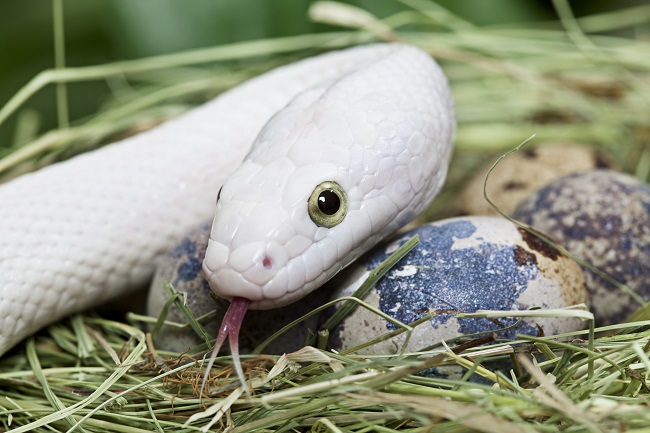Many people encounter snake eggs while exploring outdoors or even in their own backyards, yet distinguishing these ovoid wonders can be a challenge.
Understanding the appearance and characteristics of snake eggs is important, especially if you live in an area where snakes are common.
This guide provides an in-depth look into what snake eggs look like, making identification simpler and safer for everyone.

Physical Characteristics of Snake Eggs
Here are some of the physical characteristics of snake eggs:
Read Also:
Shape and Size
Most snake eggs are oval or elongated in shape and are often compared to the shape of chicken eggs, but smaller. The size varies, depending on the species of snake. The larger the snake, the larger the egg it produces.
Color
Snake eggs are typically off-white or cream-colored. However, the color can vary somewhat, depending on the species and the environmental conditions. Some snake eggs might have a yellowish or even pinkish tint.
Shell Texture
Unlike bird eggs, snake eggs have a soft, leathery shell. This shell is flexible and can dent if pressure is applied. However, this flexibility allows the baby snake to break through the shell when it’s time to hatch.
Snake Eggs vs. Other Reptile Eggs
Differentiating snake eggs from other reptile eggs can be challenging. For instance, turtle and lizard eggs can look very similar.
The primary distinguishing feature is usually the egg’s texture. Snake eggs tend to have a softer, more flexible shell, while turtle and lizard eggs typically have harder, more rigid shells.
Where are Snake Eggs Found?
Snake eggs are usually laid in hidden, secure locations. This could be under rocks, inside rotting logs, or in loose, moist soil. Some snakes, like the garter snake, give live birth and thus do not lay eggs at all. If you find eggs in clusters or piles, these are likely snake eggs.
Safety Precautions When Encountering Snake Eggs
If you encounter what you believe are snake eggs, it’s important to leave them undisturbed. Some snake species guard their eggs and may become aggressive if they feel their eggs are threatened.
Egg-Laying Snakes vs Live-Bearing Snakes
Not all snakes lay eggs. While most snake species are oviparous (egg-laying), some are viviparous, meaning they give birth to live young.
Oviparous Snakes
Oviparous snakes, such as most rat snakes and king snakes, lay eggs which then incubate outside the mother’s body in a warm, safe location.
Viviparous Snakes
Viviparous snakes, including boas and green anacondas, retain the eggs within their bodies until they hatch, then give birth to live young.
Ovoviviparous Snakes
Then there are ovoviviparous snakes, like rattlesnakes and garter snakes. These snakes keep the eggs inside their body until they’re ready to hatch, meaning the young snakes effectively hatch inside the mother and are born live.
The Incubation Process of Snake Eggs
Snake eggs require heat and humidity to incubate properly.
Incubation Period
The incubation period for snake eggs varies among species but generally lasts between 45 and 70 days. The temperature and humidity levels of the environment will significantly affect the duration of the incubation period.
Temperature and Humidity
Incubation temperature is critical to snake eggs. Too cold, and the embryos won’t develop; too hot, and the embryos can die or suffer developmental problems. Similarly, appropriate humidity is necessary for the eggs to stay hydrated and healthy.
Snake Egg Hatching Process
When it’s time to hatch, the baby snake uses a specialized tooth called an egg tooth to slice open the eggshell.
Egg Tooth
The egg tooth is a small, sharp protrusion on the front of the snake’s snout. It’s used solely for hatching and falls off shortly after the snake emerges from the egg.
Read Also:
Conclusion
Identifying snake eggs can be a fascinating endeavor. However, it’s important to remember safety precautions when encountering potential snake eggs. Their distinct oval shape, leathery texture, and off-white color can help you distinguish them from other reptile eggs.
If you find eggs in a hidden, secure environment, they are likely the product of a snake. Always remember to observe from a distance and never disturb the eggs, ensuring safety for both you and the potential baby snakes.
























